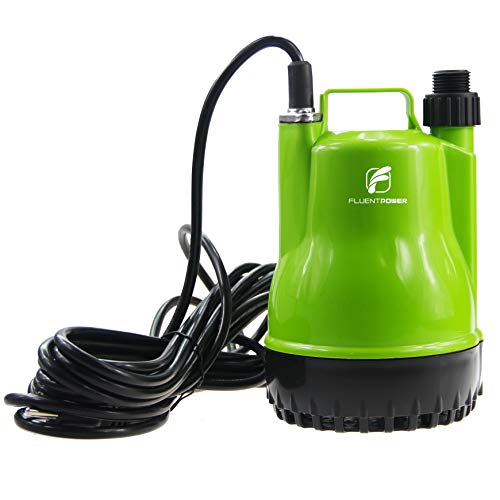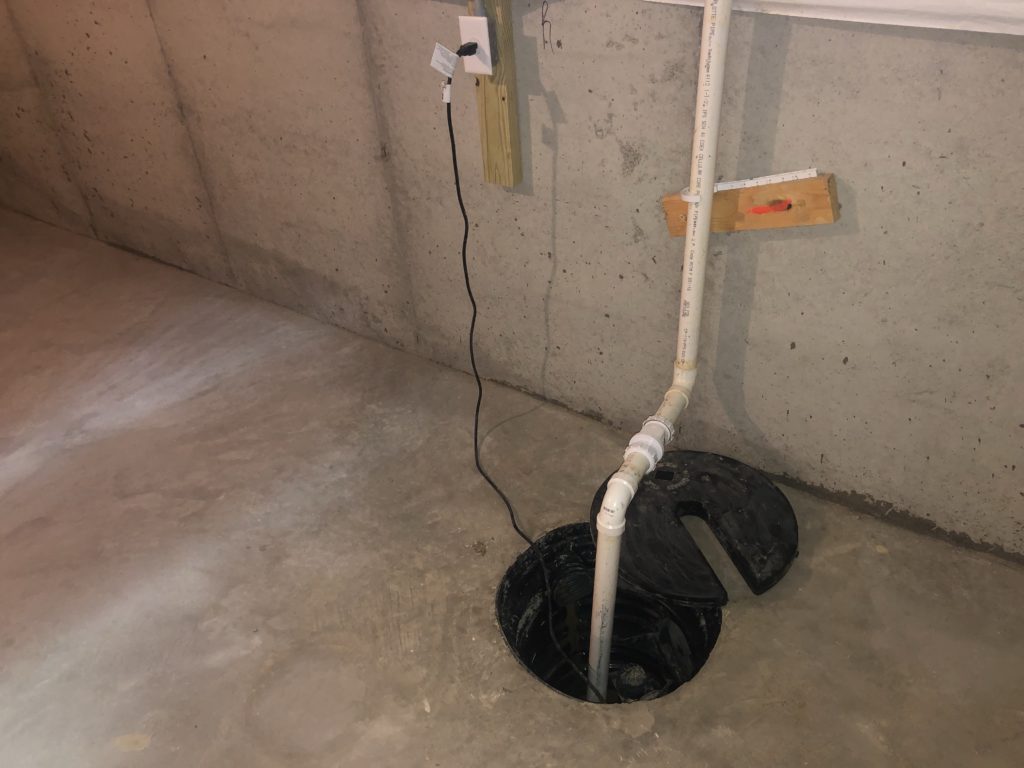Just about everyone maintains their unique rationale in relation to How To Effectively Clean A Sump Pump.

Sump pumps are crucial elements in numerous homes, especially in locations prone to flooding or extreme moisture. They aid stop water damage by successfully eliminating excess water from basements or crawl spaces. Nonetheless, like any other appliance, sump pumps call for regular upkeep to guarantee they function properly when needed the most. Cleansing your sump pump is a vital part of its upkeep, and comprehending just how to do it correctly can conserve you from pricey repair work and prospective calamities.
Introduction
Preserving a tidy sump pump is vital for its appropriate performance and long life. Neglecting this necessary job can lead to blockages, breakdowns, and inevitably, water damages to your home. Consequently, learning how to clean a sump pump is essential for homeowners that rely upon these tools to maintain their cellars completely dry and secured.
Signs of a Dirty Sump Pump
Knowing when your sump pump needs cleaning is important for stopping possible breakdowns. Some typical indications that suggest a filthy sump pump consist of odd sounds during procedure, reduced water circulation, and noticeable particles in the pit. If you observe any one of these signs, it's important to cleanse your sump pump immediately to prevent any further issues.
Planning for Cleansing
Prior to you begin cleaning your sump pump, it's vital to take some safety and security preventative measures. Begin by shutting off the power to the pump to avoid any kind of electrical accidents. Additionally, put on proper protective equipment, such as handwear covers and goggles, to protect on your own from dirt, debris, and possible microorganisms.
Understanding the Sump Pump
Prior to diving into the cleansing procedure, it's necessary to have a standard understanding of exactly how a sump pump works. Typically set up in a pit or basin listed below the basement flooring, a sump pump includes numerous crucial components, consisting of a pump, a float switch, and a discharge pipeline. When water accumulates in the pit, the float button activates the pump, which after that pumps the water out through the discharge pipeline, away from the building's structure.
Step-by-step Overview to Cleaning a Sump Pump
Shutting down the Power
Begin by disconnecting the power supply to the sump pump to stop any mishaps while cleaning.
Checking for Correct Functioning
Prior to re-installing the pump, carry out a fast test to make sure that the float button activates the pump properly. Put some water into the sump pit and observe the pump's operation. If every little thing is functioning properly, you can rebuild the pump and reconnect the power supply.
Removing Debris and Dirt
Make use of a bucket or a scoop to get rid of any visible debris, dust, or debris from the sump pit. Dispose of the debris appropriately to stop it from clogging the pump or the discharge pipe.
Cleaning up the Pump and Drift Switch
Once the pit is clear of debris, carefully remove the pump from the pit. Examine the pump and the float button for any kind of indicators of damages or wear. Use a soft brush or cloth to clean the surfaces and eliminate any type of accumulated crud.
Purging the System
After cleansing the pump and float button, purge the sump pit with tidy water to remove any kind of remaining dirt or debris. This will certainly assist make sure that the pump operates smoothly and successfully.
Upkeep Tips to Keep Your Sump Pump Clean
In addition to routine cleaning, there are a number of maintenance tips you can follow to maintain your sump pump in optimal problem:
Conclusion
Cleaning your sump pump is an essential facet of its maintenance and guarantees that it operates effectively when you need it the most. By adhering to the actions described in this overview and integrating regular upkeep right into your regimen, you can extend the life expectancy of your sump pump and secure your home from water damages.
6 STEPS ON HOW TO CLEAN A SUMP PUMP PROPERLY
UNDERSTANDING SUMP PUMPS
Your sump pump plays a crucial role in protecting your home by managing and removing excess water. It primarily functions as a “shield”, guarding your basement against the damaging effects of water accumulation. The pump is housed in a sump pit in the lowest part of your basement, and its job is to pump out any water that collects there.
During heavy rainfalls or when snow melts rapidly, water can infiltrate your basement, posing potential risks like flooding, structural damage, and harmful mold growth. Here, the sump pump springs into action, pumping out the intruding water and directing it away from your home.
SAFETY FIRST
Before cleaning, remember to prioritize safety. Disconnect the sump pump from the power source to prevent any accidental electric shocks. Also, wear sturdy gloves to protect your hands from any sharp or dirty components within the pump.
REMOVE THE SUMP PUMP
After ensuring your safety, the next step is to remove the sump pump from its pit. Doing this might require careful maneuvering as you don’t want to damage any pump components. Once removed, clean the sump pit to remove any accumulated debris or sludge.
INSPECT THE PUMP
Inspect the pump for any visible signs of wear or damage. Check the power cord, float switch, and impeller housing. If any components look worn out or damaged, consider replacing them to ensure optimal performance.
CLEAN THE PUMP
Thoroughly clean the pump with warm, soapy water. Make sure to rid it of any dirt, gravel, or other debris that might impede its performance. You can use a toothbrush to clean the small, hard-to-reach parts of the pump.
REINSTALL THE SUMP PUMP
Reinstall the pump into the sump pit Make sure it’s positioned correctly to remove the water effectively Once it’s back in place, reconnect it to the power source TEST THE PUMP
Finally, pour some water into the pit to ensure the pump works correctly. It should start automatically and begin pumping out the water; if it doesn’t, check the power source and the positioning of the pump.
Remember, while cleaning your sump pump is an essential part of home maintenance, hiring a professional plumber for a thorough inspection and cleaning at least once a year is also important. This will ensure that your pump is in optimal condition, ready to protect your home from potential water damage.
BEST PRACTICES FOR CLEANING SUMP PUMP DISCHARGE PIPES
Regular Inspection: Regularly inspect your discharge pipes, especially during heavy rainfall or snowmelt periods. Look for any signs of blockage or damage. Early detection of problems can prevent serious issues down the line. Periodic Cleaning: Over time, sediment and debris can accumulate in the discharge pipes, impeding the flow of water. Regular cleaning helps keep the pipes clear and functioning efficiently. You can use a high-pressure water jet to effectively clean the pipes. Insulation During Winter: In colder climates, discharge pipes can freeze, blocking the outflow of water. Protect your discharge pipes from freezing temperatures by insulating them with foam pipe insulation. This will ensure the sump pump can continue to discharge water even in freezing conditions. Proper Positioning: The discharge pipe should be positioned to direct water away from your home’s foundation. Improper positioning can lead to water seeping back into the basement. Ensure the pipe is long enough and angled correctly. Installation of a Check Valve: A check valve prevents water from flowing back into your sump pit after the pump has pushed it out. Installing a check valve helps maintain the efficiency of your sump pump and reduces the risk of flooding. Minimize Pipe Turns: Every curve or turn in the discharge pipe can decrease the efficiency of water flow. By minimizing turns and bends in your discharge pipe, you can increase the efficiency of your sump pump. https://www.fullspeedplumbing.com/how-to-clean-a-sump-pump-properly9999/

I recently found that page about Cleaning & Maintenance Tips for Your Home's Sump Pump when doing a lookup on the search engines. So long as you liked our blog posting plz don't forget to share it. I thank you for your readership.
Call Us Now